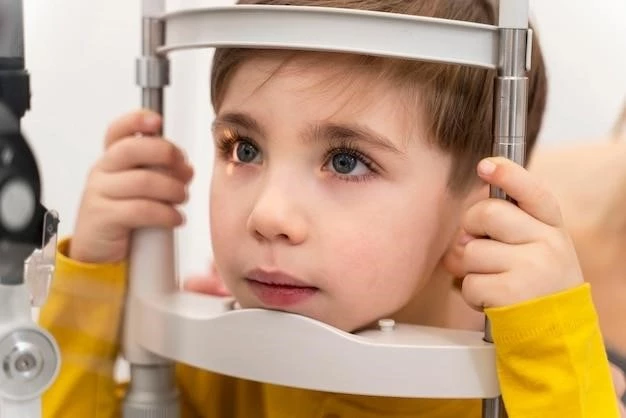Disease ‒ Lenz-Majewski Hyperostotic Dwarfism
Lenz-Majewski Hyperostotic Dwarfism is a rare medical condition characterized by skeletal abnormalities, including dwarfism, dysplasia, and hyperostotic bones. It is caused by mutations in the PTDSS1 gene.
I. Overview of Lenz-Majewski Hyperostotic Dwarfism
Lenz-Majewski Hyperostotic Dwarfism is an extremely rare genetic disorder that affects skeletal development and bone growth. This condition is characterized by a unique combination of features including dwarfism, progressive thickening of bone, intellectual disability, distinctive facial features, dental abnormalities, and other physical abnormalities.
Individuals with Lenz-Majewski Hyperostotic Dwarfism have bones that are abnormally dense and prone to fractures. The condition is typically apparent at birth or during early childhood. The severity of symptoms can vary widely among affected individuals, even within the same family.
One of the key hallmarks of Lenz-Majewski Hyperostotic Dwarfism is the presence of hyperostosis, which refers to excessive bone growth. This leads to skeletal abnormalities that can impact mobility and overall quality of life. Additionally, individuals with this condition often have short stature, with height significantly below average for their age and gender.
Intellectual disability is another common feature of Lenz-Majewski Hyperostotic Dwarfism, ranging from mild to moderate in severity. Individuals may also exhibit delays in speech and motor skills development. Facial features associated with this condition may include a prominent forehead, wide-set eyes, a flat nasal bridge, and a small jaw.
Dental abnormalities such as delayed tooth eruption, overcrowding, and misalignment of teeth are also frequently observed in individuals with Lenz-Majewski Hyperostotic Dwarfism. These dental issues can contribute to difficulties with eating and maintaining oral health.
Overall, Lenz-Majewski Hyperostotic Dwarfism is a complex medical condition that requires comprehensive medical care and ongoing management. Early diagnosis and intervention can help address symptoms and improve quality of life for individuals living with this rare genetic disorder.
II. Causes and Mutations
Lenz-Majewski Hyperostotic Dwarfism is primarily caused by mutations in the PTDSS1 gene. This gene provides instructions for producing an enzyme that plays a crucial role in the synthesis of phosphatidylserine, an essential component of cell membranes. Mutations in the PTDSS1 gene disrupt the normal function of this enzyme, leading to the characteristic features of the disorder.
These mutations are typically de novo, meaning they occur for the first time in an affected individual and are not inherited from the parents. The majority of cases of Lenz-Majewski Hyperostotic Dwarfism are sporadic, occurring randomly and without a family history of the condition. In rare instances, affected individuals may have inherited the mutation from a parent with somatic mosaicism.
Individuals with Lenz-Majewski Hyperostotic Dwarfism typically have a specific mutation in the PTDSS1 gene that disrupts the enzyme’s activity, ultimately leading to the abnormal skeletal development and other associated features of the disorder. The exact mechanisms by which these mutations result in the observed symptoms are complex and the subject of ongoing research.
Research into the genetic causes of Lenz-Majewski Hyperostotic Dwarfism is critical for understanding the underlying biological pathways involved in the disorder and developing potential targeted treatments. By elucidating the molecular mechanisms at play, scientists aim to uncover new therapeutic approaches that could help alleviate symptoms and improve outcomes for individuals affected by this rare condition.
While mutations in the PTDSS1 gene are the primary known cause of Lenz-Majewski Hyperostotic Dwarfism, there may be additional genetic or environmental factors that influence the severity and presentation of the disorder. Further studies are needed to explore these potential contributors and enhance our understanding of this complex genetic syndrome.
III. Symptoms and Diagnosis
Lenz-Majewski Hyperostotic Dwarfism presents with a range of symptoms that affect various systems in the body. Individuals with this condition commonly exhibit skeletal abnormalities, including short stature, dysplasia, and hyperostotic bones. The excessive bone growth seen in hyperostotic dwarfism can lead to bone deformities, joint stiffness, and an increased risk of fractures.
Other features of Lenz-Majewski Hyperostotic Dwarfism may include intellectual disability, developmental delays, characteristic facial features such as a prominent forehead and wide-set eyes, dental abnormalities, and abnormalities in the structure of the brain. Individuals may also experience vision and hearing impairments, as well as heart defects in some cases.
Diagnosing Lenz-Majewski Hyperostotic Dwarfism can be challenging due to its rarity and the variability in symptom presentation. Healthcare providers typically rely on a combination of clinical evaluation, imaging studies such as X-rays and CT scans to assess bone abnormalities, genetic testing to identify mutations in the PTDSS1 gene, and other specialized tests to confirm the diagnosis.
Genetic testing plays a crucial role in confirming the presence of PTDSS1 gene mutations, which are indicative of Lenz-Majewski Hyperostotic Dwarfism. Counseling by a genetic specialist may be recommended for affected individuals and their families to understand the inheritance pattern, recurrence risks, and available testing options for family members.
Given the complexity of Lenz-Majewski Hyperostotic Dwarfism and the potential overlap of symptoms with other genetic disorders, a thorough and multidisciplinary approach to diagnosis is essential. Early recognition of the condition can facilitate appropriate medical management, interventions to address specific symptoms, and access to support services for affected individuals and their families.
IV. Prevalence and Research
Lenz-Majewski Hyperostotic Dwarfism is an extremely rare genetic disorder, with only a handful of cases reported in the medical literature. The exact prevalence of the condition is unknown, as it is thought to occur sporadically and may go undiagnosed or misdiagnosed due to its rarity and complex clinical presentation.
Due to its rarity, research on Lenz-Majewski Hyperostotic Dwarfism is limited. However, ongoing studies are focused on elucidating the underlying genetic mechanisms, understanding the clinical manifestations of the disorder, and exploring potential treatment options. Collaborative efforts between clinicians, geneticists, and researchers are essential to advance our knowledge of this rare genetic syndrome.
Genetic research plays a pivotal role in identifying the specific mutations responsible for Lenz-Majewski Hyperostotic Dwarfism and uncovering the pathophysiological pathways involved in the disorder. By studying the genetic basis of the condition, researchers aim to develop targeted therapies that may help alleviate symptoms and improve outcomes for affected individuals.
Clinical research is also essential in improving the diagnosis and management of Lenz-Majewski Hyperostotic Dwarfism. By characterizing the spectrum of symptoms and complications associated with the disorder, healthcare providers can enhance their ability to recognize and provide appropriate care for affected individuals.
Given the challenges posed by the rarity of Lenz-Majewski Hyperostotic Dwarfism, international collaboration and data sharing are critical for advancing research efforts and improving patient outcomes. Increased awareness of the condition among healthcare professionals, geneticists, and researchers can facilitate earlier diagnosis, appropriate management, and ongoing support for individuals living with this rare genetic disorder.
V. Skeletal Abnormalities and Growth Issues
Individuals with Lenz-Majewski Hyperostotic Dwarfism experience a spectrum of skeletal abnormalities that significantly impact their overall health and quality of life. The hallmark feature of this condition is hyperostosis, which refers to the excessive thickening and overgrowth of bones. Hyperostosis can affect various bones in the body, leading to deformities, joint stiffness, and reduced mobility.
One of the most common skeletal abnormalities observed in individuals with Lenz-Majewski Hyperostotic Dwarfism is short stature, also known as dwarfism. Short stature results from the impaired growth of long bones during childhood and adolescence, leading to individuals being significantly below average height compared to their peers.
In addition to short stature, individuals with this condition may experience dysplasia, a term that describes abnormal development or growth of tissues. Skeletal dysplasia in Lenz-Majewski Hyperostotic Dwarfism can manifest as irregular bone growth, deformities in the spine or limbs, and other structural abnormalities that affect skeletal function.
Hyperostotic bones in Lenz-Majewski Hyperostotic Dwarfism are prone to fractures due to their increased density and altered structure. Fractures can occur with minimal trauma and may require specialized orthopedic care to ensure proper healing and reduce the risk of complications.
Growth issues in individuals with Lenz-Majewski Hyperostotic Dwarfism extend beyond bone abnormalities, affecting overall development and physical well-being. Delayed growth milestones, delayed speech development, and motor skill delays are common features observed in affected individuals, necessitating early intervention and targeted therapies to support optimal growth and development.

Managing skeletal abnormalities and growth issues in Lenz-Majewski Hyperostotic Dwarfism requires a multidisciplinary approach involving orthopedic specialists, endocrinologists, geneticists, and other healthcare providers. Individualized treatment plans tailored to the specific needs of each patient are essential for addressing the complex challenges associated with this rare genetic disorder.
VI. Medical Conditions and Associated Syndromes
Lenz-Majewski Hyperostotic Dwarfism is a complex medical condition that is associated with a range of symptoms and potential medical complications affecting multiple organ systems. Individuals with this rare genetic disorder may experience various medical conditions and syndromes that require comprehensive medical management and ongoing care.
One of the primary medical conditions associated with Lenz-Majewski Hyperostotic Dwarfism is intellectual disability. Individuals with this condition may exhibit cognitive impairments ranging from mild to moderate, impacting their learning abilities, social interactions, and overall quality of life. Early intervention and educational support are crucial for addressing the cognitive challenges faced by affected individuals.
Developmental delays in speech and motor skills are common in Lenz-Majewski Hyperostotic Dwarfism and may require targeted therapies such as speech therapy, occupational therapy, and physical therapy to promote optimal development and functional independence.
Dental abnormalities are another characteristic feature of Lenz-Majewski Hyperostotic Dwarfism, with affected individuals often experiencing delayed tooth eruption, overcrowding, misalignment of teeth, and other oral health issues. Regular dental care and monitoring are essential to prevent complications and maintain oral health.
Individuals with Lenz-Majewski Hyperostotic Dwarfism may also exhibit vision and hearing impairments that necessitate ongoing evaluation by ophthalmologists and otolaryngologists. Early detection and management of visual and auditory issues are crucial for preserving sensory function and enhancing overall quality of life.
Moreover, some individuals with Lenz-Majewski Hyperostotic Dwarfism may present with structural brain abnormalities or heart defects, highlighting the multisystem nature of this genetic disorder. Collaboration among various medical specialists is essential to provide comprehensive care and address the diverse medical conditions and associated syndromes that may arise in individuals with Lenz-Majewski Hyperostotic Dwarfism.
VII. Treatment and Management
The treatment and management of Lenz-Majewski Hyperostotic Dwarfism require a multidisciplinary approach to address the complex needs of affected individuals. While there is no cure for this rare genetic disorder, various strategies can help alleviate symptoms, improve quality of life, and promote overall well-being.
Medical interventions for individuals with Lenz-Majewski Hyperostotic Dwarfism are symptom-specific and may include orthopedic treatments to address skeletal abnormalities such as bone deformities, joint stiffness, and fractures. Orthopedic surgeries, physical therapy, and assistive devices may be recommended to enhance mobility and reduce the risk of musculoskeletal complications.
Intellectual disability and developmental delays in individuals with Lenz-Majewski Hyperostotic Dwarfism may benefit from early intervention services, educational support, and therapies aimed at optimizing cognitive function and enhancing adaptive skills. Speech therapy, occupational therapy, and behavioral interventions can play a key role in addressing cognitive and developmental challenges.
Regular dental care is essential for individuals with Lenz-Majewski Hyperostotic Dwarfism to manage dental abnormalities and promote oral health. Dental interventions such as orthodontic treatments, fluoride treatments, and proper oral hygiene practices can help prevent dental complications and maintain optimal oral function.
Monitoring for vision and hearing impairments in affected individuals is crucial for early detection and appropriate management. Ophthalmologic evaluations, hearing tests, and interventions such as corrective lenses or hearing aids can improve sensory function and enhance communication and sensory experiences.
Given the multisystem nature of Lenz-Majewski Hyperostotic Dwarfism, close coordination among healthcare providers, including geneticists, orthopedic specialists, developmental pediatricians, and other specialists, is essential for comprehensive care and management. Genetic counseling and family support services can provide crucial information, resources, and emotional support to individuals and families affected by this rare genetic disorder.
